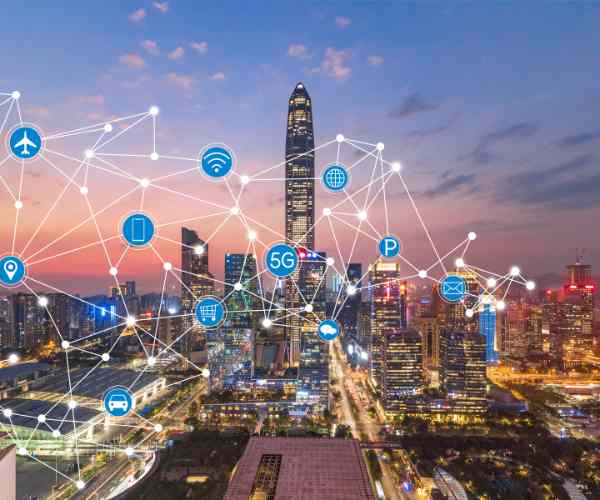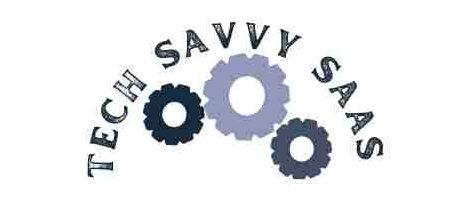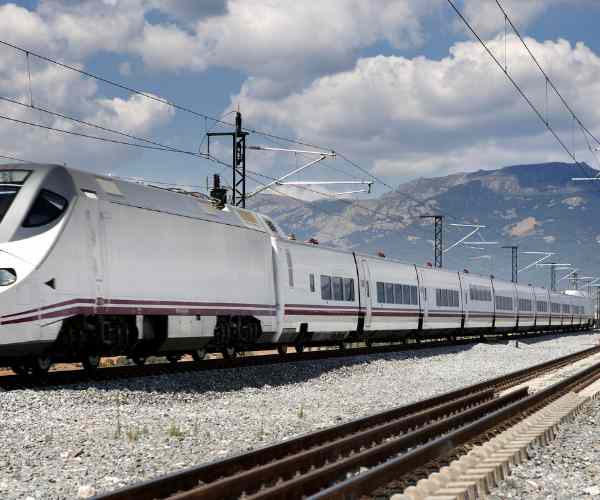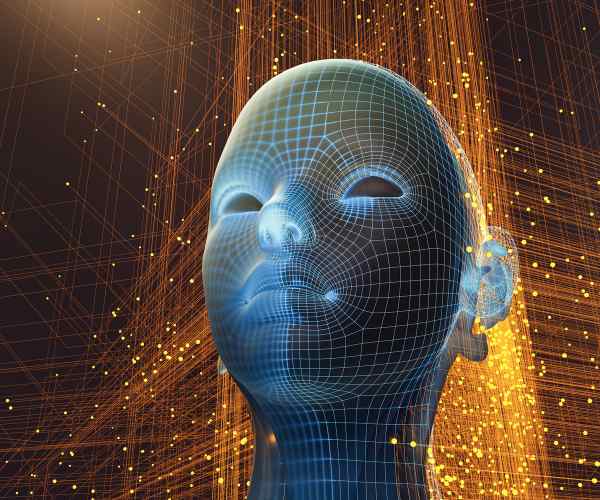Predicting the future of smart cities and urban development is not just a theoretical exercise; it is a necessity in a world where technology rapidly transforms urban environments.
As cities grow in population and complexity, the integration of big data, artificial intelligence (AI), and advanced urban infrastructure is no longer optional. These technologies are the cornerstone of modern urban planning and are reshaping how cities operate, interact, and evolve.

The Transformation of Urban Environments
In today’s digital age, cities are evolving into smart cities—urban areas that utilize cutting-edge technology to enhance public services, reduce energy consumption, and improve the overall quality of life for their inhabitants. Big data plays a critical role in this transformation, allowing city planners to analyze vast amounts of information in real time. This enables more informed decision-making, from traffic management to energy distribution.
For example, AI-powered systems in cities like New York and London help predict traffic patterns, reduce congestion, and optimize public transportation routes. These systems rely on real-time data and neural networks that can learn and adapt to changing conditions, ensuring efficient and sustainable urban mobility.
The Integration of Technology in Urban Planning
Urban planning today must consider the integration of smart city technologies at its core. This involves designing cities that are not only functional but also sustainable and resilient to future challenges. The use of data-driven technologies such as IoT (Internet of Things) devices, machine learning, and predictive analytics allows for the creation of urban systems that are both adaptive and responsive.
For instance, Singapore has emerged as a global leader in smart city development, leveraging data-driven insights to manage everything from waste disposal to public safety. The city-state’s comprehensive approach to urban design incorporates sustainability as a central theme, aiming to reduce its carbon footprint while enhancing the quality of life for its residents.
Exploring Sustainable Cities and Smart City Technologies
This post will delve into the various facets of sustainable cities and the technologies driving smart city development. We will explore the challenges and opportunities that arise in urban design, focusing on how sustainable urbanism can be achieved through circular economy principles and energy-efficient technologies.
Moreover, we will examine the role of smart city technologies in addressing urban challenges such as climate change, resource management, and social equity. By understanding these dynamics, we can better predict how the cities of the future will evolve and how current urban planning strategies can be optimized for long-term success.
Challenges and Considerations
What Are the Data Privacy and Security Challenges in Smart Cities?
As smart cities increasingly rely on data-driven technologies, protecting citizen data has emerged as a critical concern. The integration of IoT devices, big data analytics, and urban intelligence systems into city infrastructure means that vast amounts of personal and sensitive data are continuously collected, processed, and stored. This raises significant issues related to data privacy and security.
One of the primary risks involves cybersecurity. The interconnected nature of urban systems—spanning from traffic management to public safety—makes them vulnerable to cyberattacks. A breach in one system can potentially disrupt the entire city’s functionality, leading to severe consequences. For example, the 2017 WannaCry ransomware attack affected public services across multiple countries, highlighting the vulnerabilities in urban infrastructure.
To safeguard these urban systems, cybersecurity strategies must be robust and proactive. This includes implementing encryption standards, regular security audits, and real-time monitoring of urban networks. Local governments and city planners must collaborate with cybersecurity experts to develop comprehensive security frameworks that protect both infrastructure and citizens.
What Are the Economic and Social Implications of Smart City Technologies?
The economic and social implications of implementing smart city technologies are profound. On one hand, the potential benefits include improved efficiency in public services, reduced energy consumption, and enhanced urban mobility. However, these advancements come at a significant cost.
Smart city development requires substantial financial investment in infrastructure, technology, and human resources. For example, Songdo International Business District in South Korea—a model smart city—was developed at an estimated cost of $35 billion. Such high costs necessitate careful strategic planning and often require the involvement of local governments and private sector partnerships.
In addition to economic considerations, social equity is a crucial factor. Smart cities must ensure that the benefits of technology are accessible to all residents, not just the privileged few. This includes addressing the digital divide, where marginalized communities may lack access to the technologies that power smart cities. Urban planners must design urban systems that are inclusive, promoting equal access to smart city services across all socio-economic groups.
How Do Regulatory and Policy Issues Impact Smart City Development?
The success of smart city initiatives heavily depends on the regulatory and policy environment. Governments play a pivotal role in setting the regulations that support urban development while addressing the challenges posed by smart city technologies.
For instance, regulations around data privacy are essential to protecting citizen information. The European Union’s General Data Protection Regulation (GDPR) is a prime example of comprehensive legislation that governs how data should be collected, processed, and stored, with significant implications for smart city projects across Europe.
Policy frameworks must also promote joined-up planning—a holistic approach that integrates various aspects of urban planning, from transportation to environmental sustainability. Without cohesive policies, urban development can become fragmented, leading to inefficiencies and missed opportunities. Examples like Barcelona’s Smart City Strategy showcase how comprehensive policies can successfully guide urban systems toward innovation while maintaining social and environmental responsibility.
FAQs
What Are the Key Components of a Smart City?
Smart cities are complex ecosystems that integrate various components to improve the quality of urban life and the efficiency of public services. The key components include:
- Data Analytics: The backbone of smart cities is data. Big data analytics processes vast amounts of information generated from various urban systems, enabling real-time decision-making and predictive insights. For instance, London’s smart traffic management system uses data from sensors and cameras to optimize traffic flow, reducing congestion by up to 20%.
- Urban Systems: These include transportation, energy management, waste management, and public safety. Singapore’s smart city initiatives integrate these systems through a centralized platform that monitors and manages city operations, ensuring efficiency and sustainability.
- Sustainable Technologies: Green technologies and renewable energy sources are essential for reducing the environmental impact of urbanization. For example, Copenhagen’s carbon-neutral by 2025 goal leverages wind power, district heating, and cycling infrastructure to minimize its carbon footprint.
How Can Cities Prepare for the Future of Smart Urban Development?
Preparing for the future of smart urban development requires a multi-faceted approach that includes:
- Strategic Planning: Urban planners must develop long-term strategies that align with both current needs and future goals. Amsterdam’s Smart City initiative involves collaboration between government, businesses, and citizens to create a flexible and adaptive urban environment.
- Technology Integration: Successful smart cities seamlessly integrate emerging technologies into their infrastructure. Barcelona’s use of IoT sensors in waste management, for example, optimizes collection routes and reduces costs by 30%.
- Sustainability: Future-ready cities prioritize sustainability in every aspect of development. Stockholm’s Royal Seaport project aims to be fossil-fuel-free by 2040, incorporating energy-efficient buildings, smart grids, and sustainable transportation systems.
What Are the Potential Benefits and Drawbacks of Smart Cities?
Smart cities offer numerous benefits but come with challenges.
- Benefits:
- Improved Efficiency: Automation and real-time data improve the efficiency of urban systems. For example, New York City’s smart water meters have reduced water waste by detecting leaks early, saving the city millions of dollars annually.
- Sustainability: Smart cities are designed to minimize environmental impact. Tokyo’s smart grid initiatives enhance energy efficiency and resilience, contributing to the city’s sustainability goals.
- Public Safety: Smart surveillance systems and emergency response technologies enhance public safety. Rio de Janeiro’s Operations Center integrates data from various sources to improve disaster response and city management.
- Drawbacks:
- Data Privacy: The vast amount of data collected in smart cities poses significant privacy risks. Citizens’ movements, habits, and personal information are continuously tracked, raising concerns about surveillance and data misuse.
- Economic Costs: Implementing smart city technologies requires substantial investment. Cities like Songdo in South Korea have faced criticism for the high costs associated with their smart city developments, which can strain public budgets and widen the gap between affluent and underprivileged areas.
How does smart technology impact everyday life?
Smart city technologies have a profound impact on the daily lives of residents.
- Urban Mobility: Smart transportation systems improve the efficiency and convenience of getting around. Dubai’s autonomous taxis are an example of how smart technology can reduce traffic congestion and provide safer, faster commutes.
- Public Services: Smart cities enhance the delivery of public services such as healthcare, education, and utilities. Toronto’s smart healthcare systems use data analytics to optimize patient care and streamline hospital operations.
- Quality of Life: Smart technologies contribute to a higher quality of life by creating safer, cleaner, and more efficient urban environments. For example, Vienna’s smart waste management system reduces waste-related pollution and promotes recycling, making the city cleaner and more sustainable.
Conclusion
Predicting the future of smart cities and urban development requires an in-depth understanding of current trends, technological advancements, and the growing importance of sustainability. As urban environments evolve, the integration of data-driven technologies and sustainable practices will be pivotal in shaping the cities of tomorrow.
Strategic planning and innovative thinking are essential for ensuring that cities not only meet the challenges of today but are also prepared for the opportunities and obstacles of the future. Data-driven solutions—from smart transportation systems to energy-efficient urban design—will play a central role in creating urban spaces that are efficient, equitable, and resilient.
Encouraging collaboration among government entities, the private sector, and citizens will be critical to the success of smart city initiatives. Staying informed about emerging technologies, participating in urban planning initiatives, and supporting policies that promote sustainable urbanism are all actions that can help shape the future of urban living.
As we move forward, it is clear that smart cities will not only redefine urban landscapes but will also transform how we live, work, and interact with our environments. The potential for innovation is vast, and with thoughtful planning and execution, the cities of the future can be places of enhanced quality of life, environmental stewardship, and technological excellence.






